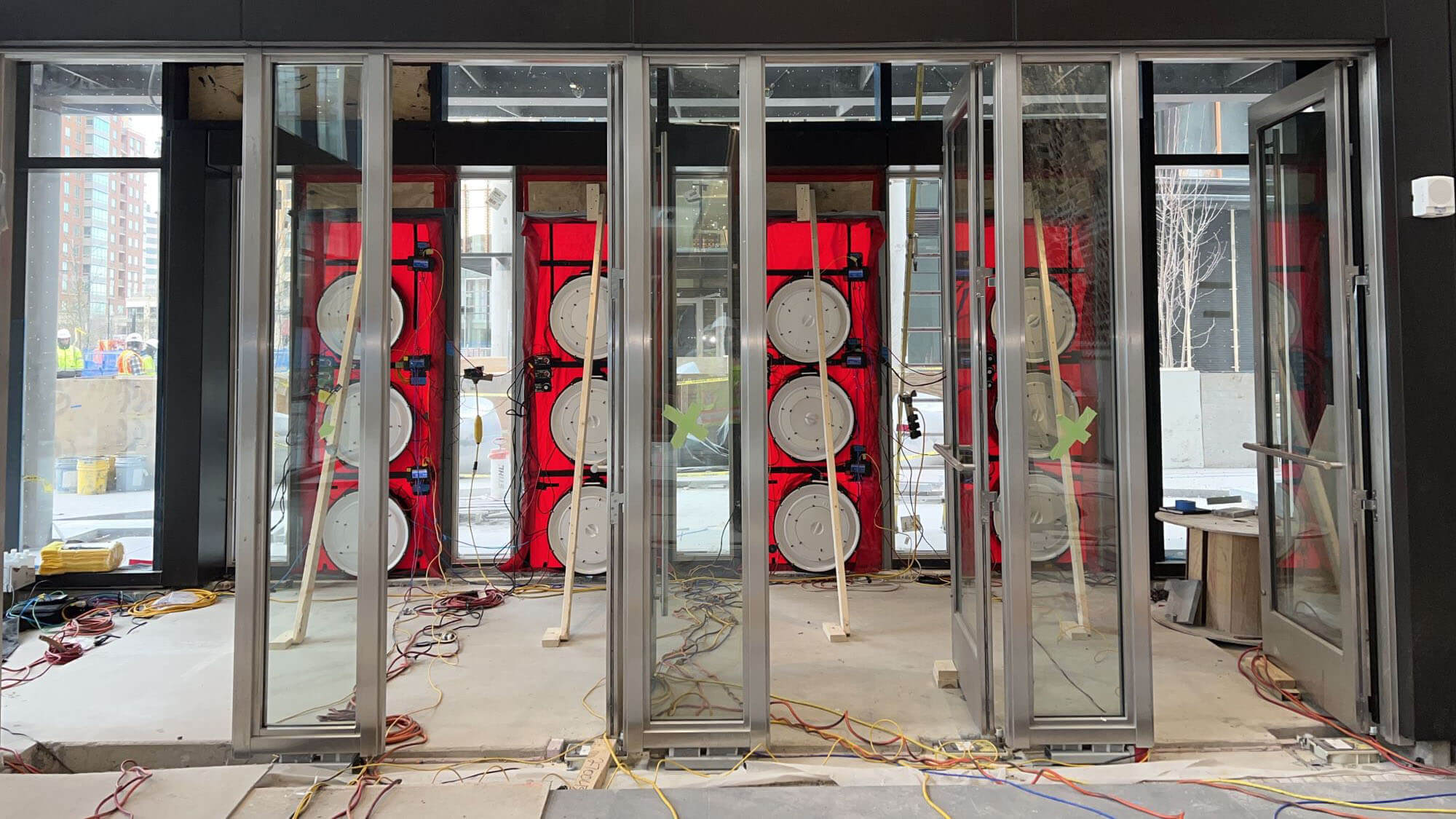The Role of Air Barriers in Modern Construction

25 Feb 2025
How Air Barriers Improve Energy Efficiency, Durability, and Building Performance
As building codes and standards evolve, there is an increasing demand for airtight, environmentally friendly building enclosures. These stricter regulations aim to lower energy consumption and enhance building performance, making air barriers essential to modern construction practices.
Importance of Air Barriers
Air barriers maintain the integrity and efficiency of building enclosures by preventing uncontrolled air movement between conditioned and unconditioned spaces. This control regulates indoor temperatures, reduces energy costs, and manages moisture, contributing to the structure's long-term durability. Without effective air barriers, buildings face issues like moisture intrusion, mold growth, and premature failure of components.
Modern air barriers do more than control airflow. Depending on the materials used, they can manage water, vapor, and thermal resistance, making them integral to the performance of the entire building enclosure. Advances in computational modeling and energy analysis further emphasize that reducing air leakage significantly lowers energy consumption and enhances efficiency.
Improving Building Enclosure Performance
While many associate energy efficiency with well-insulated walls and HVAC systems, controlling air leakage is equally critical. Uncontrolled air movement through penetrations in the building enclosure places additional strain on HVAC systems, leading to higher energy consumption and increased operational costs. A continuous air barrier system minimizes this by reducing localized condensation and moisture buildup. When combined with weather barrier properties, air barrier systems protect structures from external elements while optimizing internal energy performance.
Financial and Environmental Advantages
Airtight buildings provide clear financial and environmental advantages. According to the U.S. Energy Information Administration, residential and commercial buildings account for 27.6% of total energy consumption in the United States, with space heating alone consuming 32% of commercial energy use.
High-quality buildings with effective air barriers lower operating costs and extend the structure's lifespan by reducing energy demand. In competitive real estate markets, airtight buildings increase property value, reduce risks of costly repairs, and serve as compelling marketing tools for prospective tenants and buyers.
Testing and Regulatory Compliance
The performance of air barrier systems is assessed through quantitative and qualitative testing. These tests evaluate how effectively the system controls airflow and identify potential leakage points for improvement.
Quantitative Testing Methods
- ASTM E1827: Measures airtightness using blower doors to create pressure differentials.
- ASTM E779: Assesses air leakage rates through multi-point blower door testing.
- ASTM E3158: Evaluates large or multi-zone buildings to ensure airtightness.
- U.S. Army Corps Protocol: Combines quantitative and qualitative methods for rigorous assessment in military and government buildings.
Qualitative Testing Methods
- Infrared Scanning: Detects temperature variations to locate insulation gaps.
- Smoke Tracing: Reveals leaks near windows, doors, and penetrations.
- Airflow Measurement: Measures air movement at potential leak points.
- Sound Detection: Identifies leaks through sound variations.
- Tracer Gas: Tracks air leaks using gas concentration analysis.
Mock-ups are commonly utilized in the pre-construction phase to validate air barrier designs and confirm correct installation. By identifying potential issues early, these tests help lessen performance problems during and after construction.
Durability Across Climates
Air barriers must be able to withstand diverse environmental conditions, including extreme temperatures and high winds. Factors like vapor permeability, adhesive properties, and exposure limitations must be carefully considered. Choosing the right materials and adhering to quality construction practices are critical for reliable performance throughout a building's lifespan.
Conclusion
Air barriers are more than just a regulatory requirement; they are strategic investments in energy efficiency, occupant comfort, and building durability. Prioritizing well-designed and properly installed air barrier systems helps project teams deliver cost-effective, sustainable buildings that perform efficiently for years.

